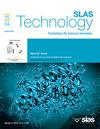Prospective analysis of quantitative EEG indices for predicting functional outcomes in acute ischemic stroke
IF 3.7
4区 医学
Q3 BIOCHEMICAL RESEARCH METHODS
引用次数: 0
Abstract
Objective
This study aims to assess the effectiveness of quantitative electroencephalography (qEEG) in determining the prognosis of acute ischemic stroke, thus offering a scientific foundation for early prognostic evaluation.
Methods
One hundred sixty-seven patients with acute ischemic stroke were admitted to the Neurology Department of Hebei Provincial People's Hospital between May 2022 and October 2023. All patients received standard treatments, including antiplatelet aggregation and lipid-lowering therapy to stabilize plaques. EEG data, mRS scores after three months, NIHSS scores before treatment, and basic patient information were all documented. Patients with a poor prognosis (mRS > 3) and those with a good prognosis (mRS < 3) were separated into two groups. The impact of EEG parameters on stroke prognosis was assessed. These indices included relative Alpha power (RAP), relative beta power (RBP), relative Theta power (RTP), relative Delta power (RDP), (δ+θ)/(α+β) value (DTABR), δ/θ value (DTR), α/β value (ABR), δ/α value (DAR), and α/(θ+δ) value (ATDR).
Results
RAP, RTP, RDP, DTABR, DTR, ABR, DAR, and ATDR were significantly correlated with mRS scores after three months. Univariate logistic regression analysis of the groups with good and poor prognoses revealed that NIHSS scores and EEG parameters, including α %, θ %, δ %, DTABR, ABR, DAR, and ATDR, were associated with functional outcomes. Following adjustment for NIHSS scores, multivariate logistic regression identified DTABR and DAR as predictors of functional outcomes. The optimal threshold for DTABR was 0.810, yielding a sensitivity of 0.848 and specificity of 0.864, while the cutoff value for DAR was 0.665, with a sensitivity of 0.759 and specificity of 0.955, as determined by ROC curve analysis assessing the sensitivity and specificity of DTABR and DAR in forecasting poor prognosis.
Conclusion
This study confirmed that NIHSS scores are reliable indicators of stroke severity for prognosis prediction. After accounting for NIHSS scores, it was further established that EEG indices could predict functional outcomes three months post-acute ischemic stroke, with DTABR and DAR demonstrating high sensitivity and specificity.
定量脑电图指标预测急性缺血性脑卒中功能结局的回顾性分析。
目的:探讨定量脑电图(qEEG)在判断急性缺血性脑卒中预后中的作用,为早期预后评估提供科学依据。方法:选取2022年5月至2023年10月河北省人民医院神经内科收治的急性缺血性脑卒中患者167例。所有患者均接受标准治疗,包括抗血小板聚集和降脂治疗以稳定斑块。记录脑电图、治疗后3个月mRS评分、治疗前NIHSS评分及患者基本信息。预后差(mRS < 3)和预后好(mRS < 3)患者分为两组。评估脑电图参数对脑卒中预后的影响。这些指标包括相对α功率(RAP)、相对β功率(RBP)、相对θ功率(RTP)、相对δ功率(RDP)、(δ+θ)/(α+β)值(DTABR)、δ/θ值(DTR)、α/β值(ABR)、δ/α值(DAR)和α/(θ+δ)值(ATDR)。结果:3个月后,RAP、RTP、RDP、DTABR、DTR、ABR、DAR、ATDR与mRS评分显著相关。单因素logistic回归分析显示,NIHSS评分和脑电图参数(包括α%、θ%、δ%、DTABR、ABR、DAR和ATDR)与功能结局相关。调整NIHSS评分后,多变量逻辑回归确定DTABR和DAR为功能结局的预测因子。DTABR的最佳阈值为0.810,敏感性为0.848,特异性为0.864;DAR的截止值为0.665,敏感性为0.759,特异性为0.955,通过ROC曲线分析评估DTABR和DAR预测不良预后的敏感性和特异性。结论:本研究证实NIHSS评分是预测脑卒中严重程度的可靠指标。考虑NIHSS评分后,进一步证实脑电图指标可以预测急性缺血性脑卒中后3个月的功能结局,其中DTABR和DAR具有较高的敏感性和特异性。
本文章由计算机程序翻译,如有差异,请以英文原文为准。
求助全文
约1分钟内获得全文
求助全文
来源期刊

SLAS Technology
Computer Science-Computer Science Applications
CiteScore
6.30
自引率
7.40%
发文量
47
审稿时长
106 days
期刊介绍:
SLAS Technology emphasizes scientific and technical advances that enable and improve life sciences research and development; drug-delivery; diagnostics; biomedical and molecular imaging; and personalized and precision medicine. This includes high-throughput and other laboratory automation technologies; micro/nanotechnologies; analytical, separation and quantitative techniques; synthetic chemistry and biology; informatics (data analysis, statistics, bio, genomic and chemoinformatics); and more.
 求助内容:
求助内容: 应助结果提醒方式:
应助结果提醒方式:


